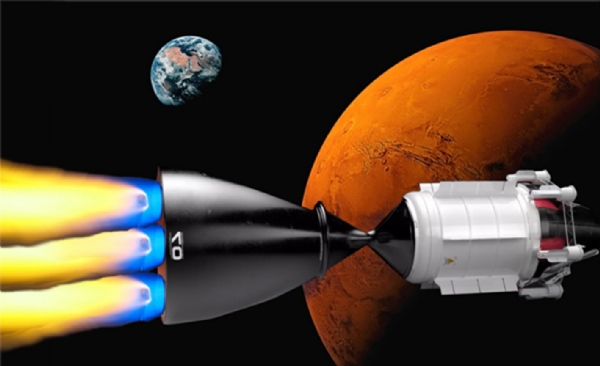NB Explains | ISRO join hands with Bhabha Atomic center to develop nuclear-powered engine ; Know about it
It should be noted tha ISRO is currently using Chemical Engines. They are suitables for satellite thrusters and they are inadequate for interplanetary missions due to fuel constraints and lack of solar power at great distances.
Total Views |
In a major development, Indian Space Reaserch Organisation is collaborating with the Bhabha Atomic Research center to develop a cutting-edge nuclear-powered engine for deep space missions.
It should be noted that, on January 28, 2021, ISRO's UR Rao Satellite Centre (URSC) issued a call for proposals outlining a three-phase plan to create a 100-Watt Radioisotope Thermoelectric Generator (RTG).

The UR Rao Satellite Centre is ISRO's primary hub for the design, development, fabrication, and testing of domestically produced satellites. These generators will serve the dual purpose of power generation and thermal regulation for a variety of space missions
Why we need nuclear-powered engine ?
It should be noted tha ISRO is currently using Chemical Engines. They are suitables for satellite thrusters and they are inadequate for interplanetary missions due to fuel constraints and lack of solar power at great distances.
To overcome these limitations, ISRO and BARC are jointly working on nuclear-powered engines, which promise greater efficiency and endurance for spacecraft traveling long distances.
ISRO Nuclear Satellite System 🚀
— Vivek Singh (@VivekSi85847001) August 15, 2023
ISRO in collaboration with Bhabha Atomic Research center is developing a Radio Thermoelectric Generator to power deep #Space mission ☢️
RTG is a type of Nuclear battery which use the heat released by decaying Plutonium to convert it into… pic.twitter.com/s0mE6uoVA6
About RTG's
The project focuses on creating Radio Thermoelectric Generators (RTGs), which utilises the heat released by decaying radioactive materials like Plutonium-238, Strontium-90 and Curium-244.
The first RTG launched into space by the United States was SNAP 3B in 1961 powered by 96 grams of plutonium-238 metal, aboard the Navy Transit 4A spacecraft. One of the first terrestrial uses of RTGs was in 1966 by the US Navy at uninhabited Fairway Rock in Alaska. RTGs were used at that site until 1995.
Lets see how it works?
Radioisotope Thermoelectric Generators (RTGs) are lightweight, compact spacecraft power systems that are extraordinarily reliable.
It comprise two essential components: radioactively decaying fuel and an extensive array of thermocouples, which facilitate the conversion of heat into electrical energy.
RTGs provide electrical power using heat from the natural radioactive decay of plutonium-238, in the form of plutonium dioxide. The large difference in temperature between this hot fuel and the cold environment of space is applied across special solid-state metallic junctions called thermocouples, which generates an electrical current using no moving parts.
The generated heat is passed to a thermocouple—a material that develops voltage when subjected to a temperature gradient (Seebeck Effect). This voltage is used to charge batteries, providing power to the satellite
Reportedly, ISRO aims to first develop a 5W RTG, which would provide a significant power source for deep space missions.

